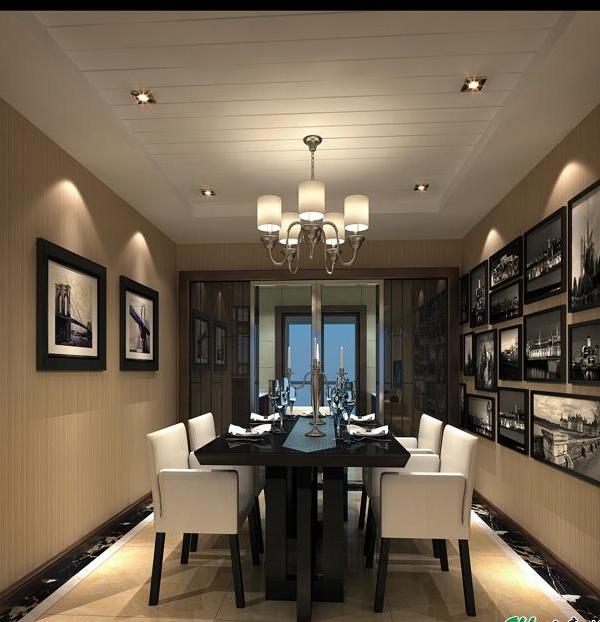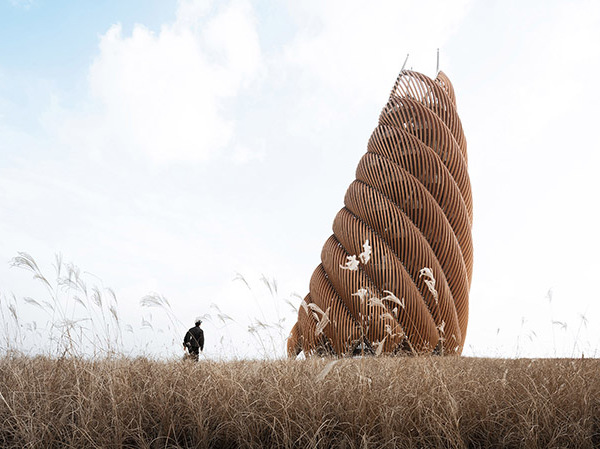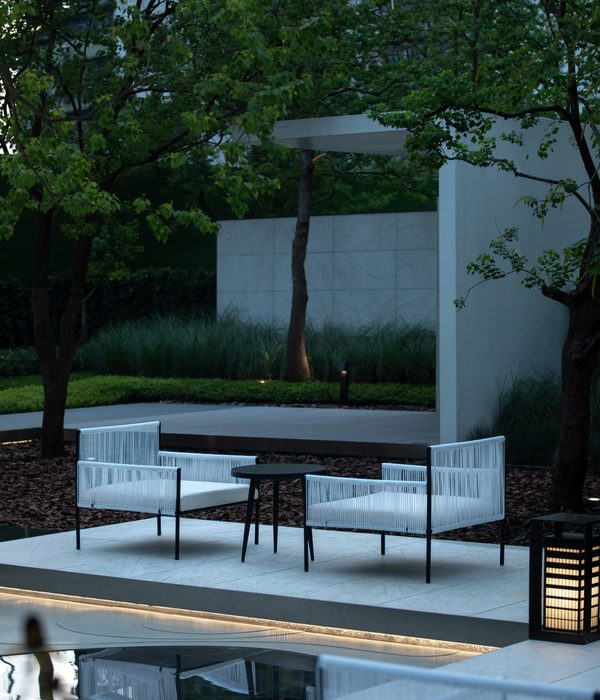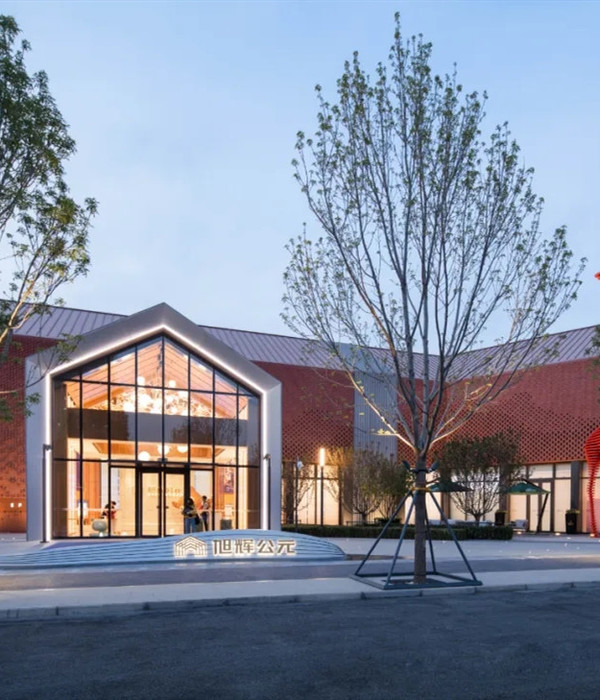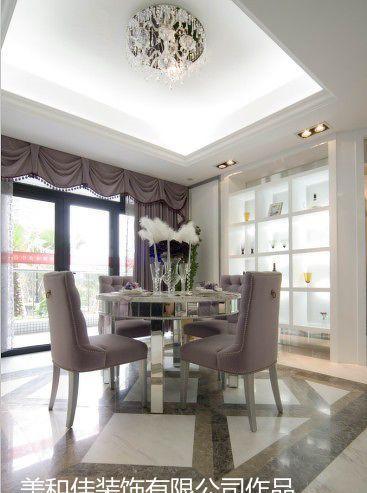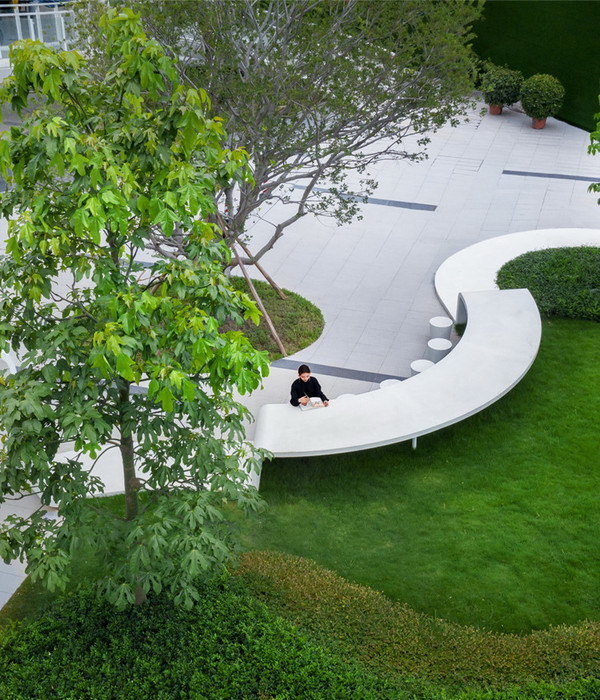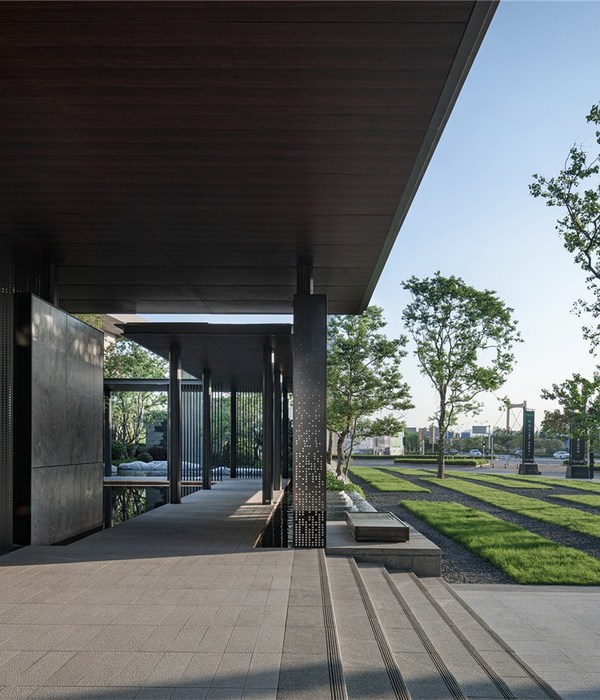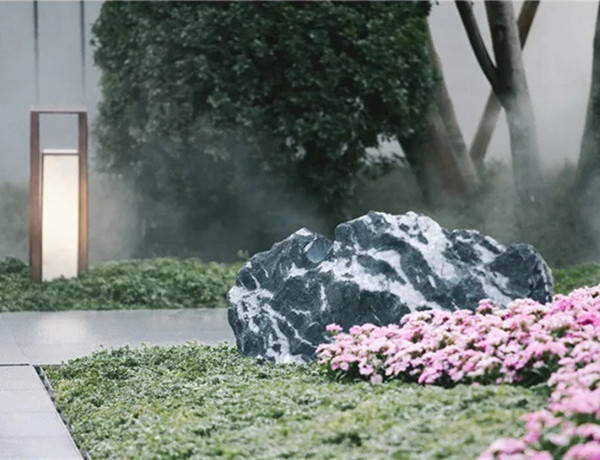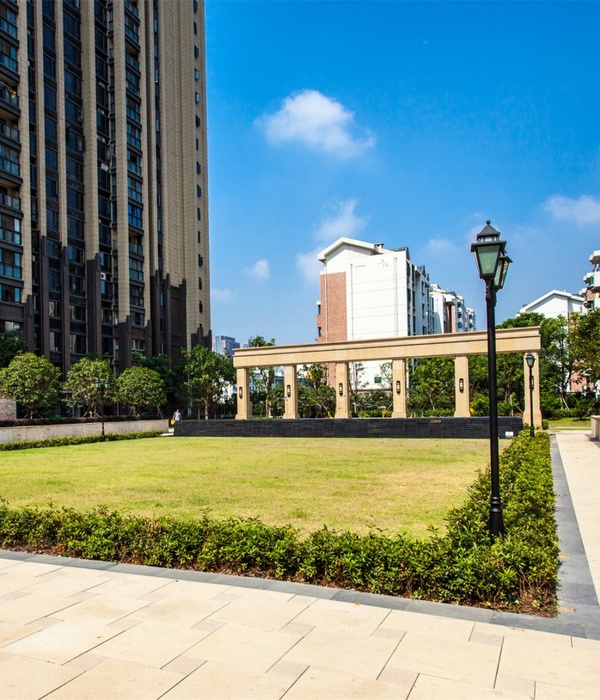在学术类建筑中有一种恒定的现象:它们会以牺牲最初的空间质量为代价不断地扩张,这导致了建筑的性质在混乱的空间序列中扭曲而变得难以清晰表达。
There is a constant in academic buildings: their continuous expansion, at the expense of their initial qualities, which leads to deform their nature in a confusion of architectures difficult to articulate.
▼项目概览,overall of the project ©Jesus Granada
在马拉加大学,美术学院决定改造并重新利用工程学院的旧楼。旧楼由三个不同时期的不同建筑组成,每栋建筑都有着各自的设计风格,而统一的屋顶结构与设备则占据了建筑之间的缝隙空间,这种建筑形式带给人们一种理性,甚至略显荒凉的外观印象。相比之下,学生们对它的使用是激烈的,建筑颓废的外表激发了学生们无尽的灵感和创造力。
▼插画表达,illustration ©DJarquitectura
The Faculty of Fine Arts decides to occupy the old buildings of the University’s engineering school, made up of three disparate buildings from different periods, each of them with a free and autonomous design, which have generated an organization of voids occupied by roofs and facilities, offering a desolate appearance. In contrast, there is the intense use by students, which due to its decadent semblance is a sign of inspiration and creativity.
▼漂浮在庭院中的混凝土结构,Concrete structure floating in the patio ©Jesus Granada
▼结构下部空间, space under the structure ©Jesus Granada
设计任务包括拆除现有的结构并翻新原有设施,以使空间得到充分的利用,同时在建筑群内部创造出一处用于艺术表演与展示的参考性场所。除了这些基本的要求外,DJarquitectura事务所为设计限定了一个格外条件,即,改造后的庭院必须连接到不同的建筑,促进建筑间的关系、改善它们的可达性与疏散性。
▼楼梯入口分析图,analysis diagram ©DJarquitectura
The commission consists of eliminating the existing structures and renovating the facilities, preparing them for adequate use and building a reference place for acts and artistic presentations. To these requirements we add the condition that it must connect the different buildings, facilitating their relationship, accessibility and evacuation.
▼入口楼梯,entrance steps ©Nicolás Díaz
▼丰富的层次与视口,Rich layers with viewports ©Jesus Granada
原有的楼层被拆除重建,除了还原各入口楼层的位置外,还完美解决了可达性的问题。一座巨大的混凝土结构被嵌入到其中一个庭院内部,简洁的建筑语言与复杂的施工技术使其成庭院中引人注目的焦点。这座混凝土结构呈现出坡道的形式,向上弯曲的地板将建筑的不同楼层联系在一起,而一系列宽度不同的平台与楼梯则将教室的使用范围延伸到室外。
The existing floor is replaced by a new one that resolves accessibility and recovers the original levels of the accesses. A concrete structure embedded in one of the courtyards, with simple rhetoric and complex technology, a floor that curls upwards looking for the different levels of the buildings; some platforms and stairs with variable widths that allow to extend the use of the classrooms to the outside.
▼盘旋的楼梯成为学生们聚会休憩的平台,The spiral staircase serves as a platform for students to gather and rest ©Jesus Granada
▼曲线带来的结构美感, Curves that bring structural beauty ©Nicolás Díaz
▼俯视庭院, overlooking the patio ©Nicolás Díaz
▼光影与裸露的混凝土, Light and shadow and exposed concrete ©Jesus Granada
原始而朴素的混凝土结构就如同一座没有肌肉和皮肤包裹的骨架,支撑结构的两堵墙连接到原建筑上,使坡道主体漂浮在周围的环境中,进而将地面空间释放了出来。本次改造设计为庭院赋予了一个全新的形象,同时以独特的建筑语言将突兀的缝隙空间融入到原有的建筑群之中。
▼承重墙体与原建筑的结合,The integration of load-bearing walls with the original building ©Jesus Granada
▼细部,details ©Nicolás Díaz / Jesus Granada
An architecture built only of bone, without muscles or skin. That floats from its perimeter releasing the ground, with two walls that are attached to the buildings, creating a whole a new identity for this courtyard, transmuting the existing gaps with another language.
▼航拍顶视图,top view ©Nicolás Díaz
▼底层平面图,ground floor plan
©DJarquitectura
▼二&三层平面图,upper floor plans
©DJarquitectura
▼剖面图,section
©DJarquitectura
Title of the work: #revolucionenelpatio
1ª FASE DE OBRA DE MEJORA EN LOS PATIOS DE LA FACULTAD DE BELLAS ARTES DE LA UNIVERSIDAD DE MÁLAGA.
Authors and construction managers: DJarquitectura / Diego Jiménez López – Juana Sánchez Gómez/
Collaborate: Jorge Barrios Corpa /ingeniero de caminos/ Jorge Salguero Ropero /arquitecto/ Graziano Camelia /arquitecto/
Location: Patio de la Facultad de Bellas Artes, Campus El Ejido, Málaga
Promoter: Universidad de Málaga
Builder: C. Lasor, s.l.
Start date of the work: Julio de 2019
End date of work: 03 de diciembre de 2020
Builded surface: 570,85m2 de patio y 371,80m2 de tribuna plegada
Budget: 420.547,25€
Photographies: Jesus Granada, Nicolás Díaz y DJarquitectura
{{item.text_origin}}

